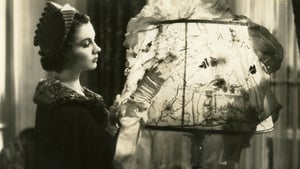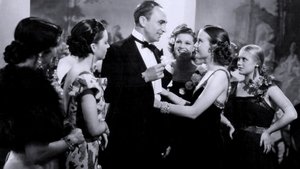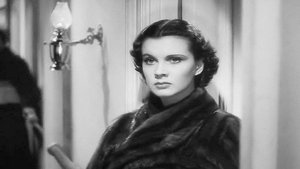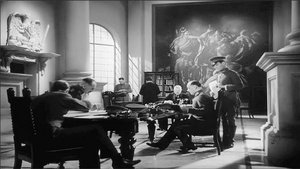Video Sources 0 Views
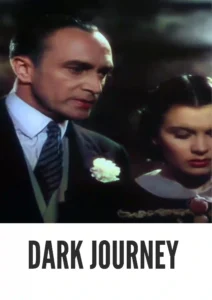
Synopsis
Love and Espionage: Dark Journey (1937) in Vivid Color

Step into a world of wartime intrigue with Dark Journey, a captivating spy romance from 1937, now beautifully colorized for a heightened viewing experience. This film, directed by Victor Saville, weaves a tale of love and espionage against the backdrop of World War I. Perfect for fans of classic cinema and those who enjoy stories of intrigue, this HD download brings a timeless piece of cinematic history to your screen. Known also as Suspects, The Girl from the Avenue, and Strangers in Paris.
Dark Journey Storyline: A Web of Deceit and Affection
Dark Journey tells the story of Madeleine Goddard (Vivien Leigh), a sophisticated fashion designer in Stockholm who is secretly a British spy. Her shop serves as a front for gathering intelligence and smuggling information to the Allies.When a handsome German officer, Baron Karl von Marwitz (Conrad Veidt), enters her life, Madeleine finds herself torn between her duty and her growing feelings for him. Unaware of each other’s true identities, they embark on a dangerous affair, even as their respective countries clash. As their love deepens, they are forced to make difficult choices that could jeopardize their missions and their lives. Dark Journey is a thrilling tale of love, loyalty, and sacrifice in a world at war.
Movie Cast
The film features a stellar cast of actors who bring this dramatic story to life:
- Conrad Veidt as Baron Karl von Marwitz
- Vivien Leigh as Madeleine Goddard
- Joan Marion as Elsa
- Ursula Jeans as Betty
- Anthony Bushell as Bob Carter
Movie Genre
Dark Journey falls into the genre of espionage romance, blending elements of spy thrillers with a passionate love story. Set against the backdrop of World War I, the film explores themes of love, loyalty, and the moral ambiguities of war.
Historical Context: Wartime Cinema and International Intrigue
Released in 1937, Dark Journey reflects the growing anxieties and tensions leading up to World War II. The film was produced during a period when European cinema was increasingly focused on themes of war, espionage, and national identity. Dark Journey offers a glimpse into the pre-war era, capturing the mood of uncertainty and the complex relationships between nations.
Colorization Details
This colorized version of Dark Journey has been meticulously restored using modern digital techniques, enhancing the visual appeal while preserving the film’s original atmosphere of suspense and romance. The colorization process involved carefully analyzing the grayscale tones of the original black and white footage and assigning appropriate colors to each scene. This painstaking process brings new life to the characters and settings, making the story even more engaging for modern audiences.
Technical Details
- Director: Victor Saville
- Screenplay: Lajos Biró, Arthur Wimperis
- Cinematography: Mutz Greenbaum
- Edited by: Francis Lyon
- Production Company: London Film Productions
- Distributed by: United Artists
- Runtime: 83 minutes
Technical Specifications
- Download Format: MP4
- Resolution: HD (1080p)
- Compatibility: Compatible with most devices, including smartphones, tablets, computers, and smart TVs.
Reviews and Critical Reception
Dark Journey (1937) is celebrated for its compelling storyline, strong performances, and sophisticated blend of romance and espionage. Vivien Leigh and Conrad Veidt deliver memorable performances, capturing the complex emotions of their characters. The film is a standout example of British cinema from the pre-war era, offering a mix of entertainment and historical context.
FAQs
- Q: What is Dark Journey about?
- A: Dark Journey is a spy romance set during World War I, about a British spy and a German officer who fall in love.
- Q: Is Dark Journey (1937) a well-known film?
- A: While not as widely known as some classics, Dark Journey is a respected film from the pre-war era, known for its engaging story and strong performances.
- Q: Is this version of Dark Journey colorized?
- A: Yes, this version has been professionally colorized to enhance the viewing experience.
- Q: What makes Dark Journey interesting for classic film fans?
- A: Dark Journey offers a blend of romance, espionage, and historical context, showcasing the talents of Vivien Leigh and Conrad Veidt.
- Q: What is the download format?
- A: The download format is MP4, which is compatible with most devices.
- Q: What resolution is the download?
- A: The resolution is HD (1080p), providing a high-quality viewing experience.
Download Now in HD!
Watch Dark Journey Today!
